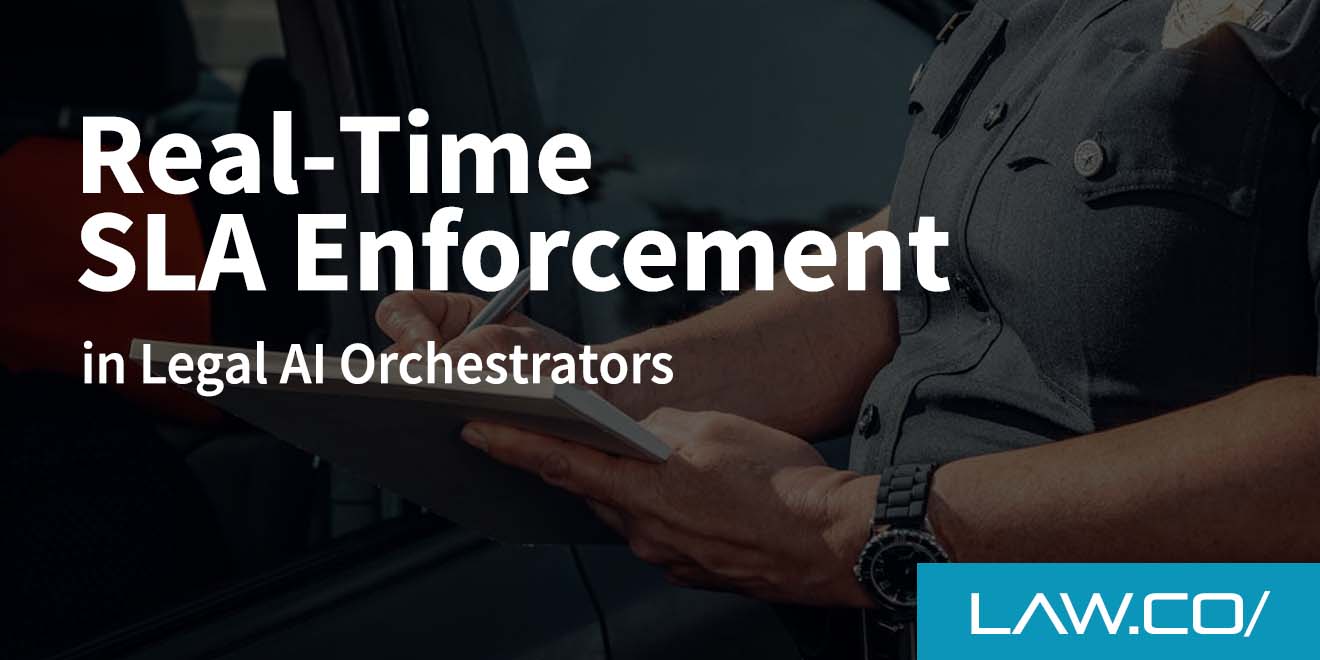
.jpg)
Stateless vs. Stateful Agents in Legal Pipelines
If you run a law firm or work as a lawyer, you likely deal with complex workflows every single day—from intake and client screening to negotiations and final resolutions. Streamlining that sequence is pivotal if you want to save time, reduce errors, and maintain a consistent professional edge. Enter the concept of “agents” in your legal pipeline—digital tools or software components designed to automate or assist various tasks.
But there’s a question many firms run into as they explore the technical nitty-gritty: Should these agents run in a “stateless” or “stateful” manner? Below is a friendly, down-to-earth breakdown of what those two terms actually mean and how choosing one over the other can impact your law practice.
What Exactly Are “Stateless” Agents?
Think of a stateless agent like a knowledgeable friend who only responds to what you say at the moment, without recalling past conversations or context. For each request—like drafting a legal form or running a conflict check—a stateless agent simply takes your input and does its job.
Because it doesn’t retain a history, it’s simpler to manage and quick to spin up. You don’t have to worry about software becoming confused by prior steps or older data. Once your request is completed, the agent effectively “forgets” what came before.
How This Helps Your Firm
If you want a straightforward “plug-and-play” solution—for instance, a tool that drafts basic legal templates or retrieves a single data point (like a statute reference) on demand—a stateless setup can be both efficient and cost-effective. Stateless agents reduce the chances of carrying over mistakes from one step to the next. Each time you run the agent, it starts fresh.
Why Consider “Stateful” Agents Then?
A stateful agent, on the other hand, is like a seasoned paralegal who remembers every detail of a case file from day one. It maintains context from previous tasks or requests—so the next time you need it to handle something, it can draw on that stored knowledge. If you’re juggling multiple steps in a case—client onboarding, discovery, document review, negotiations—having an agent that keeps track of all those stages can be a lifesaver.
The Benefits for Your Workflow
When the software “remembers” who your client is, what documents were filed, and the status of each motion, you don’t have to re-enter the same information repeatedly. If you’re building an automated system that moves clients seamlessly from intake to final billing, a stateful agent can prevent duplication of effort and reduce errors that arise from missing or conflicting data.
Is One Better Than the Other for Legal Pipelines?
The answer is an age-old legal favorite: “It depends.” While it might not be as definitive as you’d like, it’s important to consider the unique processes at your firm. If you only need a quick tool to generate standard form letters—something that doesn’t require remembering details from a previous interaction—a stateless approach likely ticks all the boxes.
On the flip side, if your firm handles complicated cases with layered steps and sensitive data, a stateful agent might be more appropriate. It’s possible, in some scenarios, to use a combination of both. For instance, you could deploy stateless agents for simple tasks and stateful agents where case history matters.
Balancing Costs, Complexity, and Ease of Use
- Generally, stateless agents are cheaper and easier to maintain because they keep everything in separate sessions. You can launch, use, and shut down these modules quickly.
- Stateful agents, while potentially more powerful, can be more complex to develop and maintain. You’ll need safeguards to ensure that the stored data is accurate, current, and legally compliant with regulations on client information. Lawyers handling confidential details must ensure robust security protocols.
- Consider whether the extra investment will produce a better return in terms of saved time, improved client experience, and fewer errors in the long run.
Practical Examples for Lawyers and Law Firms

- Stateless Example: An online Q&A chatbot that instantly provides quick references to legal definitions without needing your entire case file. Each time you ask it a question, it responds based solely on that one query—simple, direct, and to the point.
- Stateful Example: A complex case management system that logs each client’s history, the documents they’ve filled out, upcoming deadlines, and billing records. Because it keeps all that info at the ready, it can generate personalized reminders or forms based on stored details.
Making the Right Choice for Your Firm
- Before jumping in headfirst, map out your pipeline from start to finish. Identify points where repeated information is critical.
- If your biggest headache is retyping the same data over and over, a stateful solution might be worth the extra legwork and budget. If you just need a tool that efficiently handles single-step tasks, opt for the no-frills stateless approach—or run both in parallel.
What’s a Good Next Step?
- The best starting point is to discuss your workflow needs with a technology consultant or a legal tech specialist who understands both law firm pressures and software development.
- Ensure that whichever option you choose—stateless or stateful—complies with privacy and ethical standards. You can’t afford to overlook data security, especially when handling sensitive client information.
In the end, “stateless vs. stateful” doesn’t have to be an intimidating dilemma. It’s about picking the right tool for the right job, ensuring your law firm’s pipelines run efficiently and accurately. By focusing on the nature of your workflows and your long-term goals, you’ll be well on your way to a solution that saves time, money, and a whole lot of stress—something every savvy lawyer can appreciate.

%201.svg)










